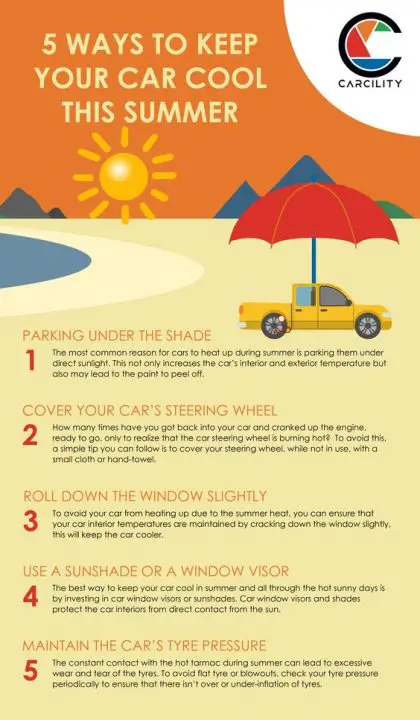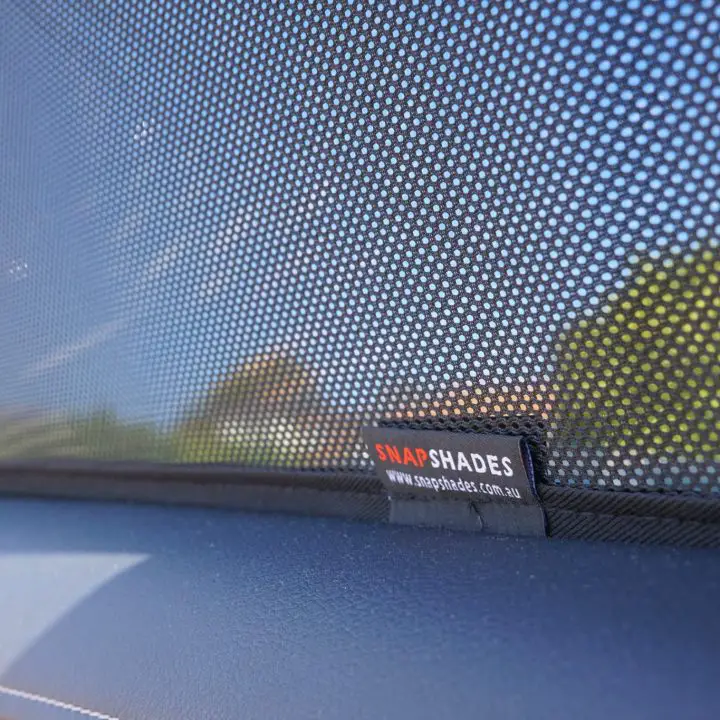Residing in a vehicle can present numerous obstacles. Particularly, managing a pleasant climate can be difficult, more so in the warmer periods. This guide provides essential approaches on how to remain comfortable and ensure a satisfactory vehicle living experience.
1. Introduction
Ever tried baking cookies inside a car on a hot day? Well, if you’re living in one, you’d know it’s no joke — it’s an oven! Temperatures can soar, making your mobile abode feel more like a sauna than a sanctuary. But, fret not, road warriors! We’ve scoured the highways and byways, and the secret alleyways, to bring you the ultimate guide on “How to Stay Cool Living in a Car.” Say goodbye to sweltering seats and hello to comfort on the go! Buckle up, and let’s navigate the heat together.

2. Finding the Right Parking Spot
Your choice of parking spot can have a significant impact on the car’s interior temperature.
- Shaded Areas: Opt for spots under trees or large buildings. This can dramatically reduce the amount of direct sunlight hitting your vehicle.
- Near Water or Green Spaces: Locations like lakes, rivers, or parks often have cooler ambient temperatures due to natural evaporation or shade from vegetation.
- Alternative Options: In extreme conditions, consider parking in covered parking garages or seeking public spaces with climate control.
3. Enhancing Ventilation
Keeping the air moving can prevent your car from turning into an oven.
- Window Shades: Using them can block direct sunlight and keep your car cooler.
- Window Vents/Portable Fans: These are excellent for promoting air circulation without compromising security.
- Cross-Ventilation: Open windows on opposite sides to allow cooler air to flow through.
Related article: How To Keep A Car Seat Cool 14 Different Ways
4. Insulating the Car
Think of your car as a living space and consider insulating methods.
- Reflective Sunshades: These prevent sunlight from penetrating and heating up the interior.
- Insulation Panels: Using foam or other insulating materials can keep the heat out and cool air in.
- Reflective Curtains: They offer additional protection by reflecting the sun’s rays away.
5. Managing Heat Sources
Every action has a reaction, including how you manage appliances.
- Avoid Heat-Generating Appliances: Gadgets like laptops can generate heat. Limit their use during peak sunlight hours.
- Cool Cooking: Opt for cold meals or use heat-free cooking techniques.
- Shaded Parking: This simple act can reduce interior temperatures significantly.
- Use Window Blocking Shades: In my experience, products like snap shades offer a convenient and stylish way to accomplish this.

6. Staying Hydrated
Hydration is your best defense against heat.
- Water Storage: Always have a stock of water and use insulating covers or coolers to keep them cold.
- Hydrating Foods: Incorporate fruits like watermelon or cucumbers into your diet.
- Cool Beverages: Herbal teas or coconut water can help replenish lost fluids.
7. Utilizing Cooling Techniques
Incorporate manual methods to bring down temperatures.
- Cold Packs: Placing these around your seating or sleeping area can help.
- Portable Air Coolers: Devices that operate on battery power can offer a burst of cold air.
- Shade Structures: Portable awnings or even large umbrellas can provide external shade.
8. Sleeping Comfortably
Heat can disrupt sleep. Ensure your bed is as comfortable as possible.
- Breathable Bedding: Materials like cotton can wick away sweat and allow better air circulation.
- Cooling Bed Accessories: Gel-infused pillows or mattress toppers can keep temperatures down.
- Sleep-Friendly Setup: Consider slightly reclining your seat or using mesh fabric for better ventilation.
9. Safety Considerations
Extreme heat can be dangerous. Always prioritize safety.
- Heat-Related Illnesses: Learn the symptoms of heat exhaustion and heat stroke. Seek shade and hydrate immediately if you start feeling unwell.
- Emergency Resources: Be aware of local shelters or public spaces where you can seek refuge during heatwaves.
10. Conclusion
Living in a car during the hotter months is challenging, but with the right strategies, it’s manageable. Implement these tips, stay safe, and don’t forget to share your experiences to help others in similar situations.
A more extreme read: How Do NASCAR Drivers Stay Cool?
- 7 Best Brake Pads for Ford F150
- 7 Best Brake Pads and Rotors for Ford F150
- 7 Best Bike Racks for Ford F150
- 9 Best Bed Mats for Ford F150 Trucks – Protect Your Truck Bed in Style
- 9 Best Bed Liners for Ford F150 Trucks – Protect Your Investment in Style
FAQs and Related Questions
While it’s possible, most home appliances are not designed for car use due to voltage differences. Opt for battery-powered or car-adapted fans and coolers specifically made for vehicles to ensure safety and efficiency.
Consider investing in insulated water bottles or coolers. Storing the water bottles on the car floor (which tends to be cooler) and away from direct sunlight can also help maintain a cooler temperature.
Reflective or UV-blocking window tints and shades are the most effective. They block out harmful UV rays and reflect sunlight, preventing the car interior from heating up rapidly.
It’s crucial to drink water regularly throughout the day, aiming for at least 8 glasses or more, especially in high temperatures. Listen to your body; if you’re thirsty, it’s a clear sign you need to hydrate.
Extreme heat can be dangerous. If you must sleep in your car during a heatwave, ensure you’ve taken measures like parking in a shaded area, using cooling techniques, and maintaining good ventilation. Always be aware of the symptoms of heat-related illnesses and have a backup plan, like knowing the location of nearby shelters or public spaces with air conditioning.
